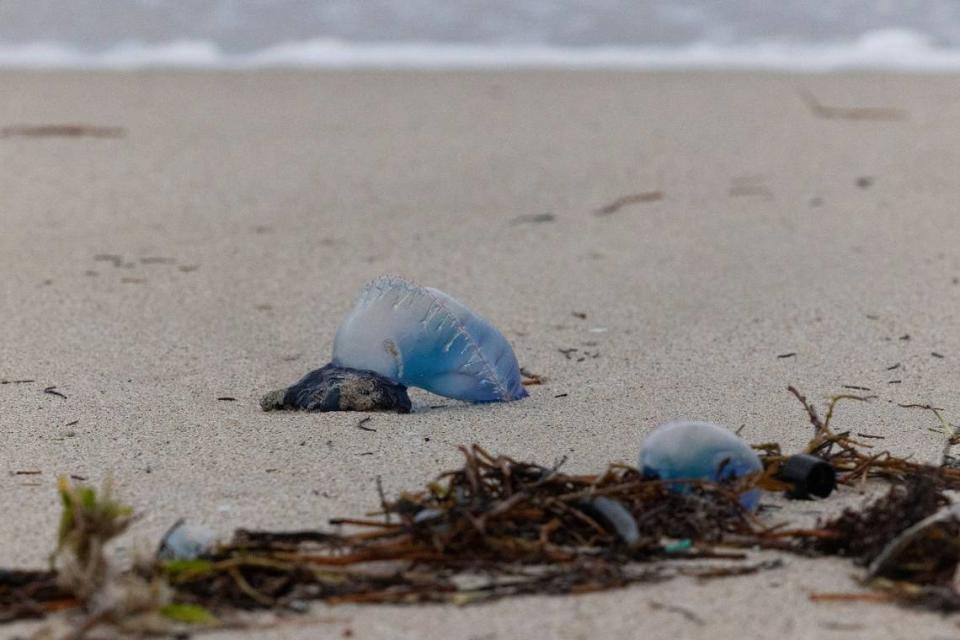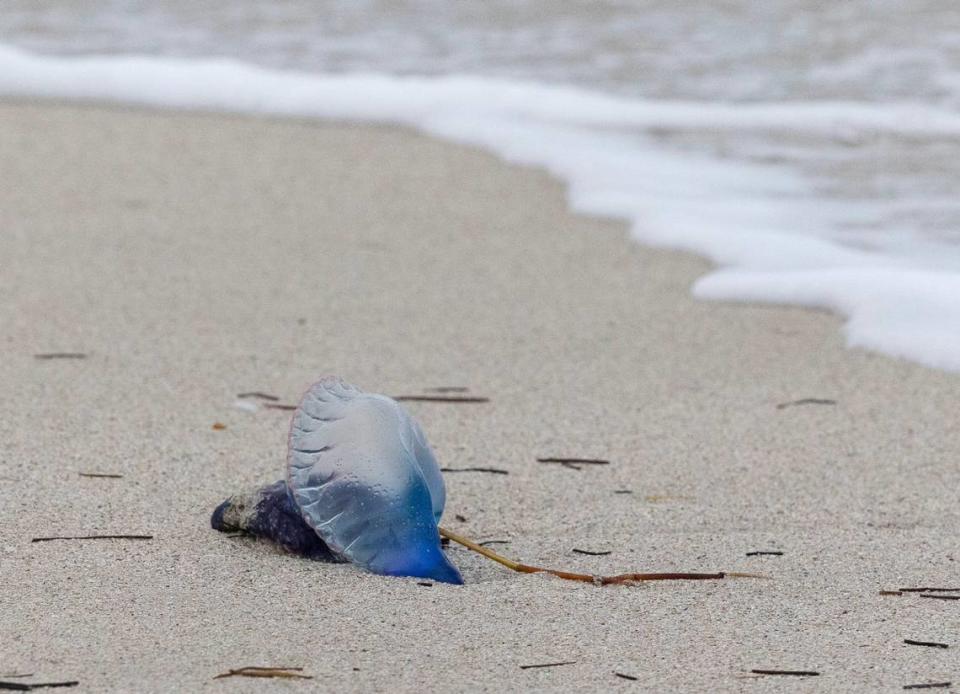They’re not jellyfish, but they sure do sting. Man o’ war are all over South Florida beaches
The high winds that are lashing South Florida this week are blowing in more than cooler weather.
All over the shallow surf and along the beaches are blue and purple man o’ war, the jellyfish-like sea creatures that pack a powerful sting to those not only in the water but those who step on their tentacles on the sand.
They look like jellyfish and sting like jellyfish — or worse — but they’re not jellyfish. The Portuguese man o’ war is a species of siphonophore whose blue gas-filled bubble floats above the water and looks like the sails of 18th century Portuguese warships (Man o’ War), according to the National Ocean Service.

They don’t swim, but rather float along with ocean currents, which is probably why they’re splayed all over the South Florida shoreline this week, and during many a late fall and winter, when winds are known to kick up.
“My ‘hunch’ is there is a seasonal shift in tradewinds, currents, or occurrence/frequency of winter storms that creates an onshore flow driving the animals onto the beaches of south Florida in the winter,” William “Monty” Graham, director of the Florida Institute of Oceanography, said in an email to the Miami Herald.
Typically “a warm water and open ocean creature,” Graham said it’s not their choice to come into shore, “but they go where the wind and current pushes them.”
Man o’ war showing up in droves on the beaches has nothing to do with breeding or a life-cycle bloom, Graham said, because they are a “year-round presence in the open Gulf, Caribbean and tropical Atlantic.”
What makes man o’ war so bothersome to swimmers, surfers and even people walking on the beach are their long strands of tentacles and polyps, which grow an average of 30 feet and can extend out as far as 100 feet, according to the National Ocean Service.
The chemicals contain stinging nematocysts, which are microscopic capsules “loaded with coiled, barbed tubes that deliver venom capable of paralyzing and killing small fish and crustaceans,” the ocean service says on its website.

“While the man o’ war’s sting is rarely deadly to people, it packs a painful punch and causes welts on exposed skin,” the service says.
If you come into contact with the stingers, vinegar is the recommended remedy, experts say.
Do not attempt to whisk away the tentacles with freshwater, ice, rubbing alcohol or urine. Yes, it’s often been said that peeing on a man o’ war sting will make it feel better.
But, any of those measures might only spur the release of more venom into the skin, scientists say.

